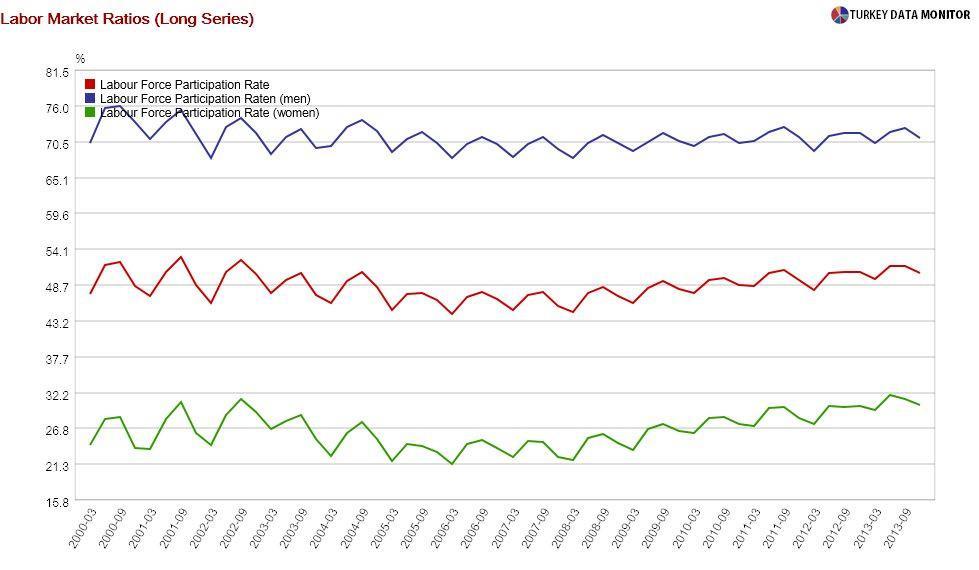The poor state of households headed by women

Istanbul think-tank Betam released a research note on March 7, in which they compared households with male and female heads, making use of the Turkish Statistical Institute’s 2011 Income and Life Standards Survey.
According to the survey, 15.2 percent of Turkey’s nearly 20 million households are headed by a woman. Of these women, one third are over 65 years old, compared to 11.8 percent in households headed by men, suggesting that women’s longer lifespan is the primary cause of women-led households. Indeed, the husbands of more than half of these women are deceased.
Unsurprisingly, the regions with the highest ratio of households headed by women are the Aegean and Mediterranean, with the lowest being Central and Northeastern Eastern Turkey. Surprisingly, the ratio of female household heads in Southeastern Turkey, which is similar to the latter two socioeconomically, is not that different from the country’s average.
After looking at their education, labor force participation and employment, Betam researchers concluded that female household heads fit two broad profiles: “While one group is relatively young, educated, more likely to join the labor force and usually working in non-farm sectors as a paid employee, the other group is made up of relatively old women with little education.”
Interestingly enough, poverty is widespread among both groups. According to the survey, there were 15.1 million people in Turkey, corresponding to 20.8 percent of the population, who could not fulfill their basic nutrition, clothing and heating needs. In other words, one out of five Turks is poor.
Whereas 20 percent of Turks living in households headed by males are poor, that ratio is 27.2 percent for women! Why? Although Betam does not offer any answers, I could think of several: For one thing, more than 60 percent of women household heads are not in the labor force, which is in line with the low women’s labor force participation rate.

Even those who are working are likely to earn less than their male counterparts in similar positions thanks to the country’s large gender gap. Of course, this could also be a data artifact: If men tend to remarry more than women, households where they are heads would be more likely to have two breadwinners compared to one in those run by women. Gökçe Uysal, one of the authors of the report, thinks this is not the case.
I thought the ruling Justice and Development Party cared for the poor and women. But then again, 2011 was not an election year. If they did the survey right now, the surveyors would probably find out that many households have received a lot of coal and food. Besides, as Gökçe noted, women are entitled to government support for single mothers only if their husbands are dead.
In other words, the government does not recognize divorced women as single mothers. No wonder they are poor! Or you could think of this as smart economic policy that discourages women from destroying the sacred Turkish family. If your name were Recep Tayyip, that is…
 Istanbul think-tank Betam released a research note on March 7, in which they compared households with male and female heads, making use of the Turkish Statistical Institute’s 2011 Income and Life Standards Survey.
Istanbul think-tank Betam released a research note on March 7, in which they compared households with male and female heads, making use of the Turkish Statistical Institute’s 2011 Income and Life Standards Survey.